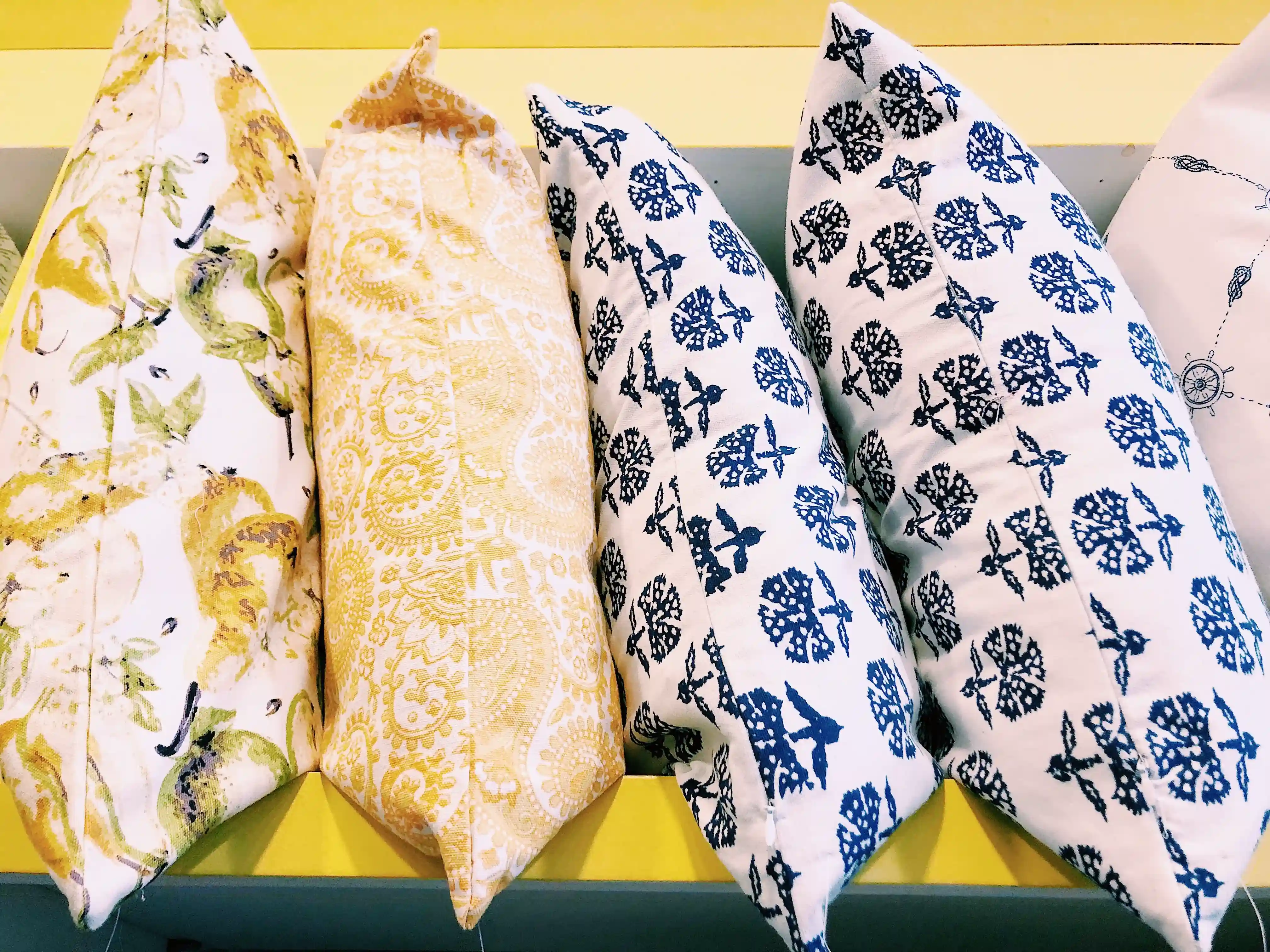Choosing the right pillow can be a challenging task, but choosing the right pillowcase can often be ignored, even though finding the right pillowcase can have a night and day difference in your sleeping, from enhancing comfortability to promoting airflow and protecting your pillow.
The issue is that there are many types of pillowcases to choose from, but there are several factors that you need to consider making an informed decision and find the best pillowcases for you.
Why selecting a suitable pillowcase is essential
- Enhanced Comfort: If you choose the right pillowcase and the right pillowcase sizes for you that fit your sleeping style and behaviors, it will enhance the overall quality of your sleep and prevent any disruption during your sleeping sessions.
- Temperature Regulation: If you’re a hot sleeper, a good pillowcase will have a breathable material that will promote airflow as well as quick-drying features, which will regulate the temperature during your sleep and prevent you from overheating or sweating.
- Skin and Hair Health: Pillowcases shouldn’t collect bacteria or any other type of irritant that could be transmitted to your hair and skin, which could lead to skin problems such as acne and breakouts as well as hair issues such as dandruff.
- Pillow Protection: Alongside enhancing the quality of your sleep, pillowcases also protect your pillows and extend their lifespan.
Pillowcase Materials
Cotton
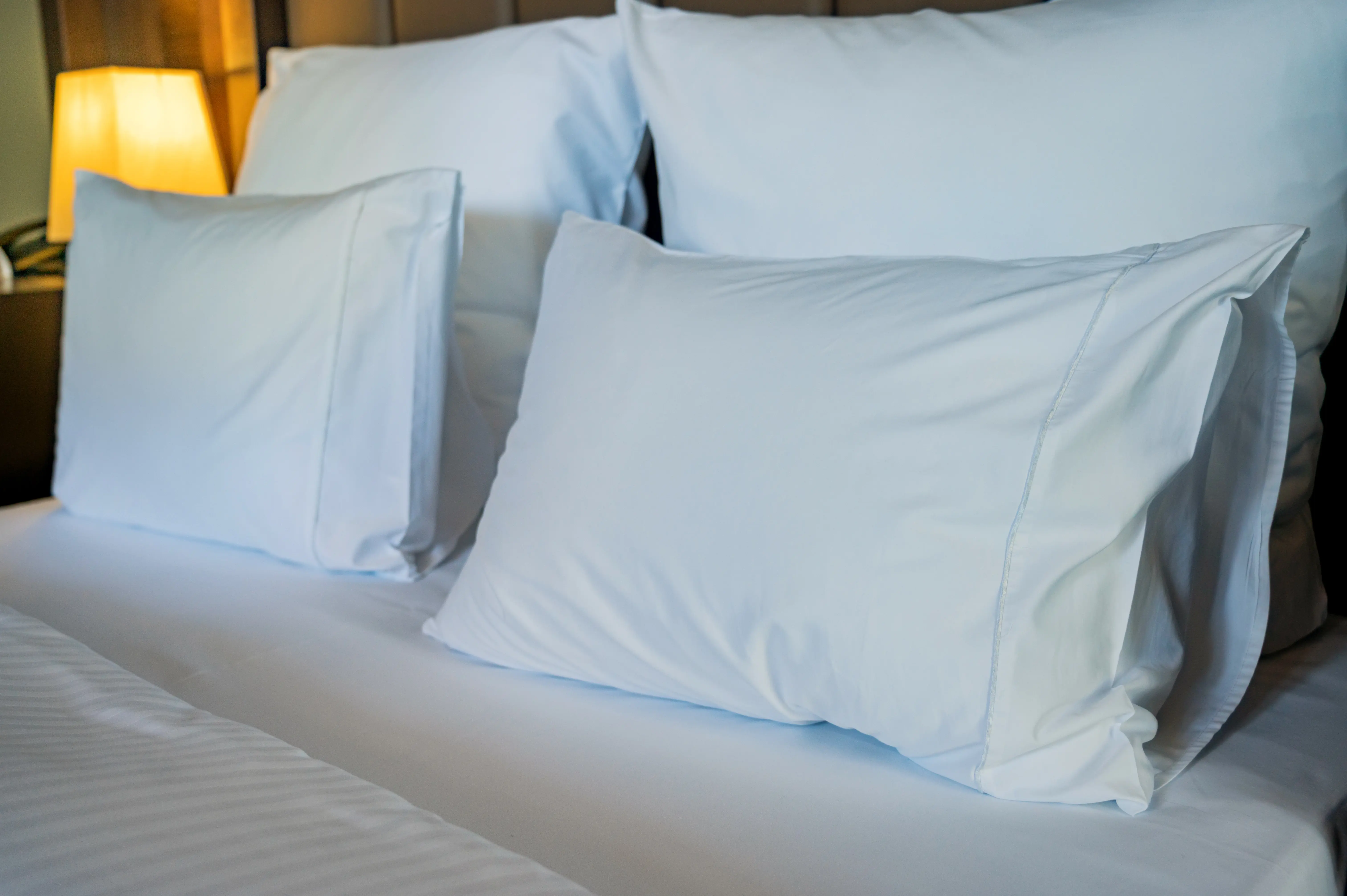
Cotton is a very common choice for pillowcases, and that’s because of its affordability, efficiency, and versatility, as it can fit almost any sleeping style, which is why it's considered one of the best pillowcases.
Pros
- Affordable: If you’re on a tight budget and you’re looking for an affordable pillowcase, then cotton is a great choice, as there’s a wide variety of budget-friendly cotton pillowcases to choose from.
- Absorbs Moisture and Heat: Cotton pillowcases have moisture and heat-wicking features, which means that if you sleep hot, cotton pillowcases will prevent swearing and regulate the temperature of the pillow.
Cons
- Rough texture: The texture of cotton might not go well with people with sensitive skin, as it creates friction on the skin.
- Durability: Cotton is not the most durable material, and it will start showing signs of wear over time and after washing multiple times.
Polyester
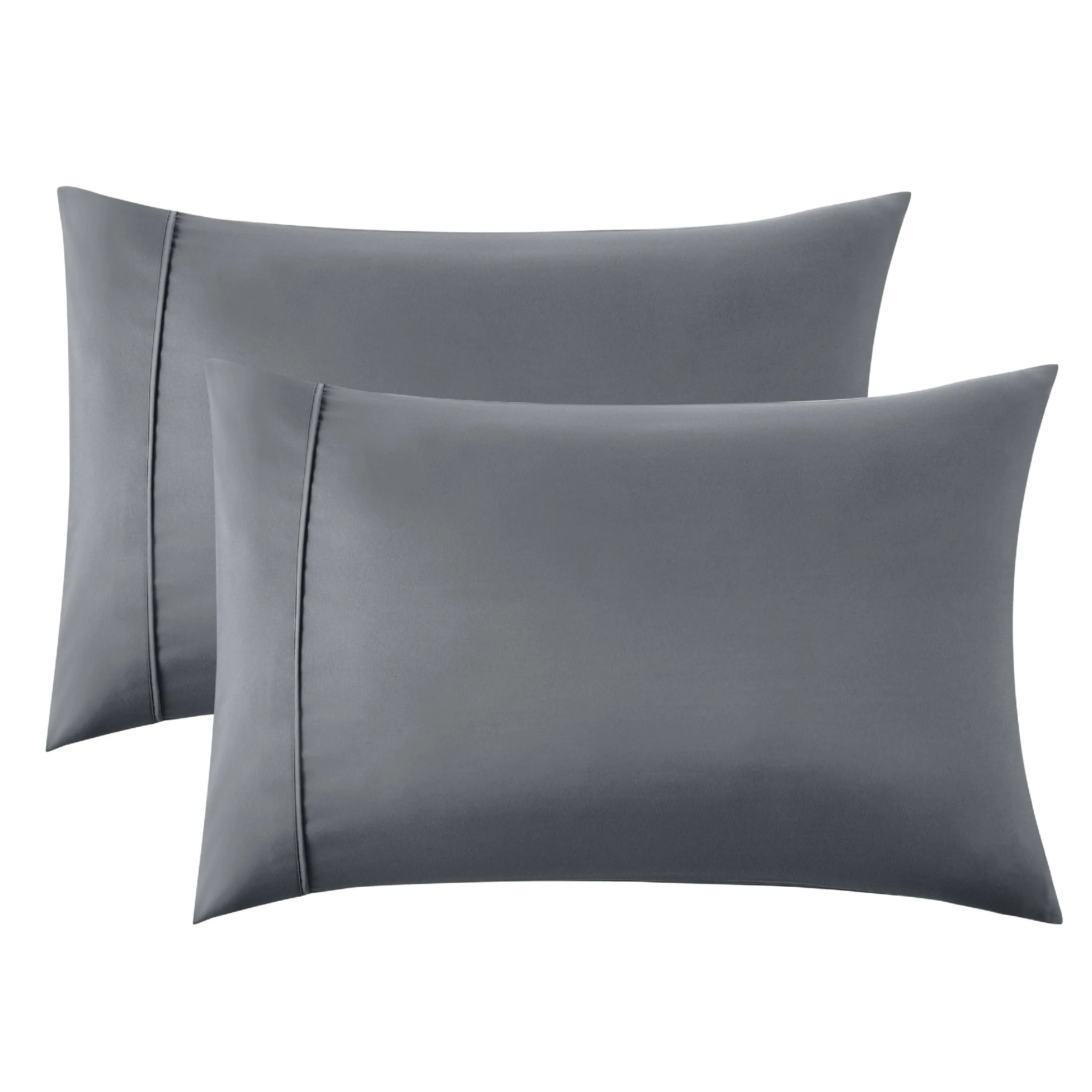
A budget-friendly pillowcase type that is wrinkle-resistant and lightweight but may lack breathability, leading to potential discomfort for some sleepers.
Pros
- Affordable: Polyester is another popular material for pillowcases due to its affordability and variety, which makes it the most convenient choice for many people.
- Easy Maintenance: Polyester pillowcases are extremely easy to maintain, as you can simply wash them in the washing machine without worrying if they're going to be damaged.
Cons
- Cooling: If you’re a hot sleeper, then polyester pillowcases are not the best choice for you, as they're not as breathable as other materials.
- Durability: If you want a pillowcase that could last for years, then you might not like polyester pillowcases, as they tend to wear out quickly and will need to be replaced every so often.
Bamboo
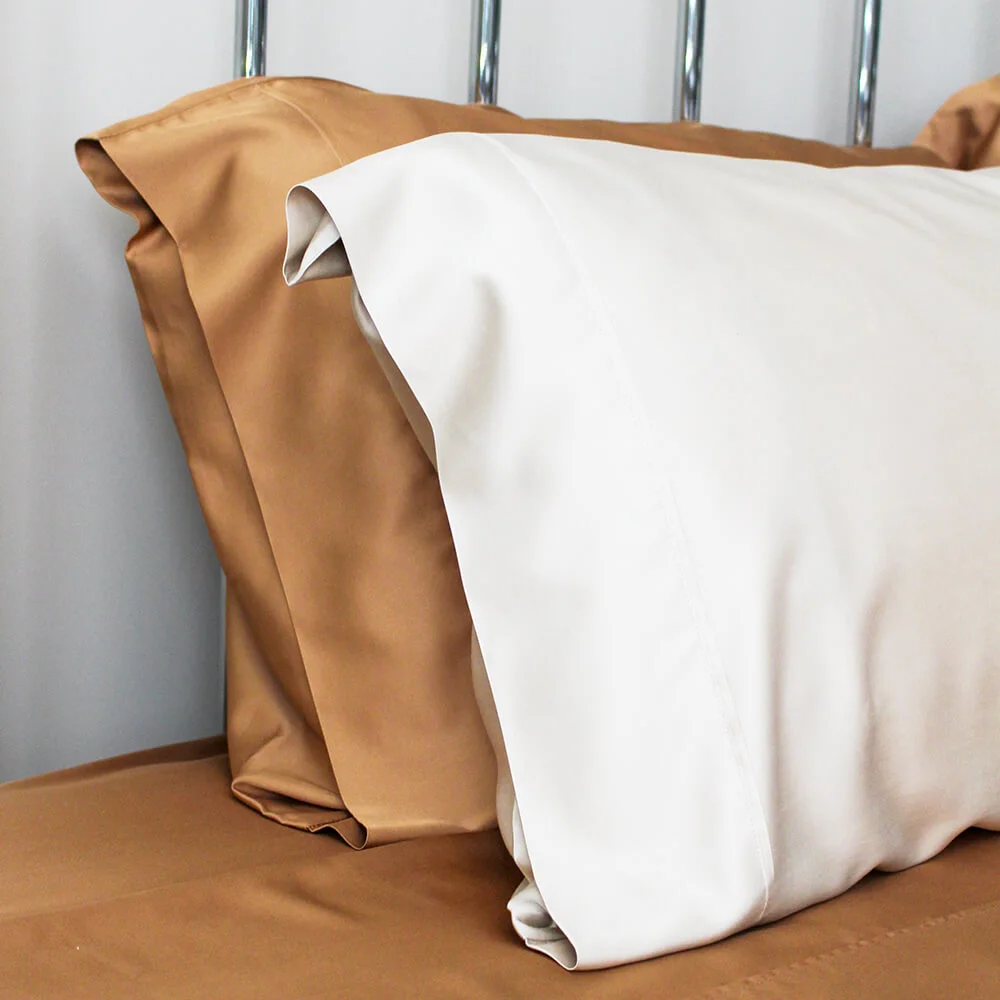
As an eco-friendly and antibacterial material, bamboo is one of the best fabrics for pillowcases and it's particularly beneficial for those with sensitive skin as it helps to combat acne and breakouts. Check out our article comparing pillowcase materials.
Pros
- Quick drying: One of the most sought-after features in bamboo pillowcases is its sound and moisture-wicking features, as bamboo has excellent performance in absorbing moisture and drying quickly.
- Eco-friendly: Bamboo pillowcase types are an excellent choice for environmentally conscious sleepers, as it’s a sustainable material.
Cons
- Price: If you’re looking for a budget-friendly pillowcase, then unfortunately, bamboo isn’t the best choice, as it’s a bit on the pricey side.
Silk
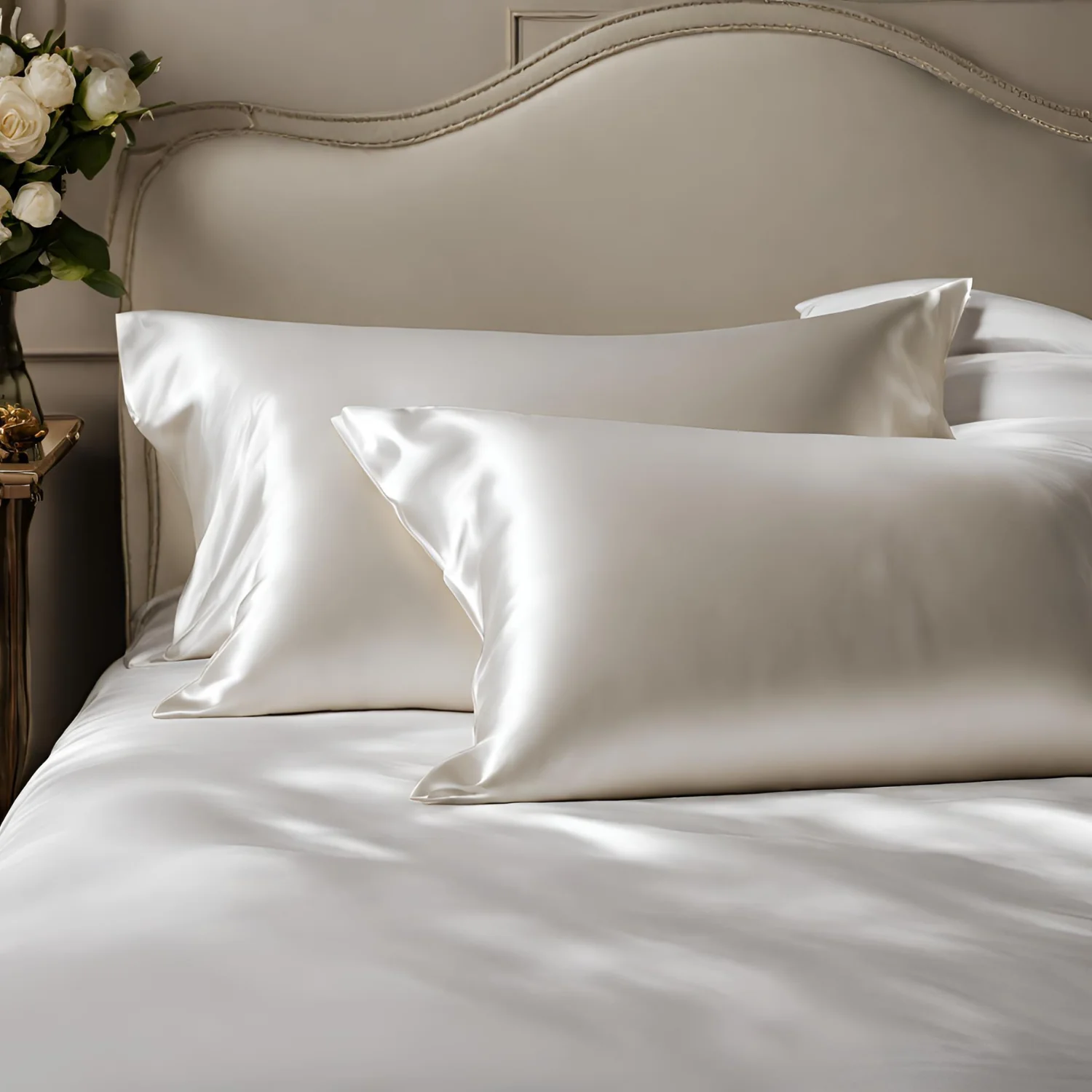
Celebrated for their luxurious texture, silk pillowcases provide multiple beauty benefits, and despite their higher cost and delicate maintenance, silk pillowcases are a worthwhile investment for those seeking a combination of elegance and health benefits.
Pros
- Cooling: Silk's temperature-regulating properties make it one of the best pillowcase materials that offers a comfortable sleep environment year-round.
- Hypoallergenic: Silk’s hypoallergenic qualities make it suitable for people who are prone to allergies.
Cons
- Price: Silk is a luxurious material, which means that it comes with a higher price tag than most pillowcases, so if you’re on a tight budget, it might not be for you.
- Maintenance: There are strict instructions that you need to follow to wash silk pillowcases without damaging them, such as turning the pillowcase upside down, putting it in a mesh bag, washing it in cold water, and using a gentle detergent. These processes might be too much of a hassle for some people.
Linen
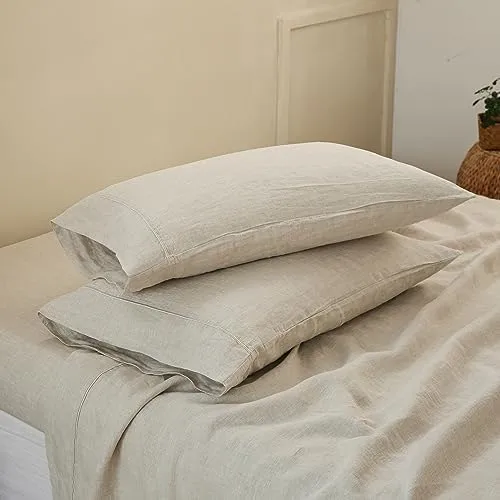
Linen is similar in its features and properties to cotton; as it’s also a natural material, it is breathable and versatile, and it's one of the best types of pillowcases.
Pros
- Cooling: Linen pillowcases allow airflow and absorb heat and moisture, which makes them one of the best fabrics for pillowcases if you’re a hot sleeper.
- Hypoallergenic: Linen pillowcases won’t trigger any allergic reactions as they're a natural hypoallergenic material.
Cons
- Prone to Wrinkles: If you want your bed to look aesthetically pleasing all the time, then linen pillowcases are not the best option for you, as they wrinkle very easily.
- Rough texture: Because linen is similar to cotton, it also has a rough texture that could be irritating to sensitive skin.
Basic Pillowcase Sizes
| Pillowcase size | Measurements (Inches) | Measurements (CM) |
|---|---|---|
| Standard | 20 inches by 26 inches | 51 CM by 56 CM |
| Queen | 20 inches by 30 inches | 51 CM by 76 CM |
| King | 20 inches by 36 inches | 51 CM by 92 CM |
| Body | 20 inches by 54 inches | 51 CM by 137 CM |
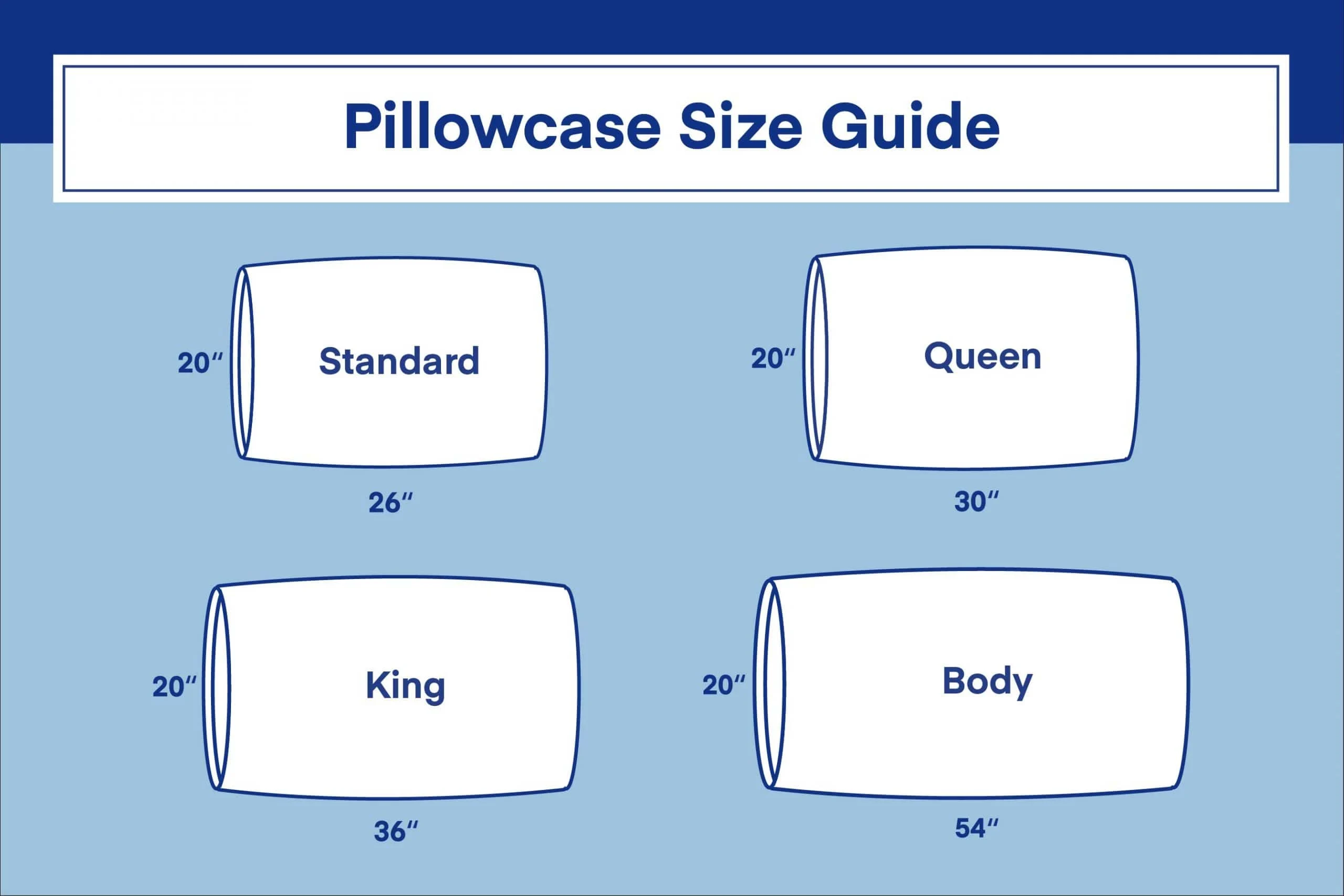
Standard
It fits standard and queen pillowcase sizes, offering versatility for different bed types. Commonly paired with twin or twin XL mattresses, these pillowcases are a staple in most households.
Queen
Provides an additional four inches in length compared to standard pillowcases, making them ideal for queen-sized beds.
Their slightly longer dimensions give a fuller, more proportionate look on full-sized beds.
King
At ten inches longer than standard pillow case sizes, these are specifically designed for king-sized pillows and beds. The size of a king pillow sham can accommodate two pillows side-by-side on a California king bed, ensuring a seamless fit.
Body
The largest and longest of the standard sizes, these pillowcases are tailored for body pillows, which require a specific shape to provide full-body support.
Pillowcase Styles
Standard Envelope Closure
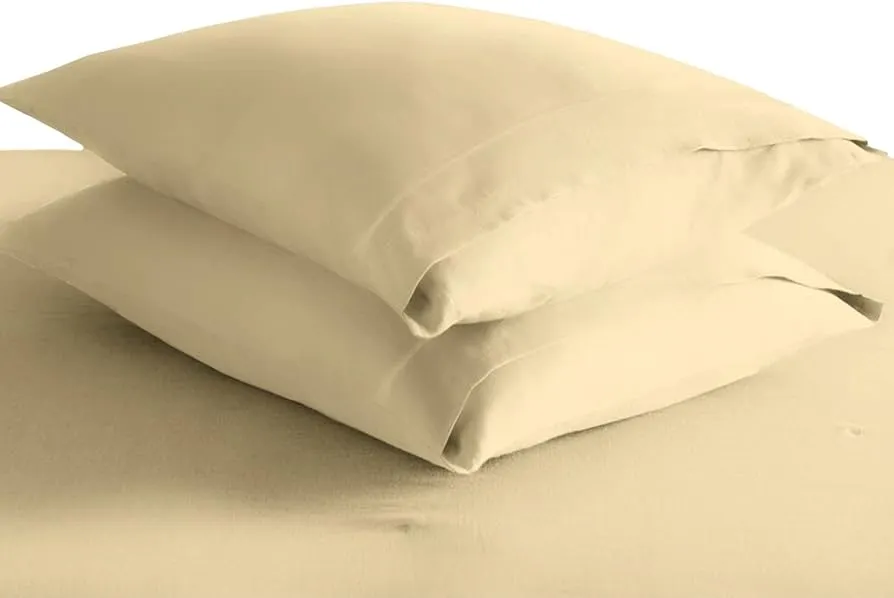
This type of pillowcase is becoming more and more popular because of the elegant touch it adds to the bed. Unlike traditional pillowcases, which are opened from each side, this style has an envelope closure to tuck the pillowcase in when you’re making the bed for a more tidy look.
Zippered Closure
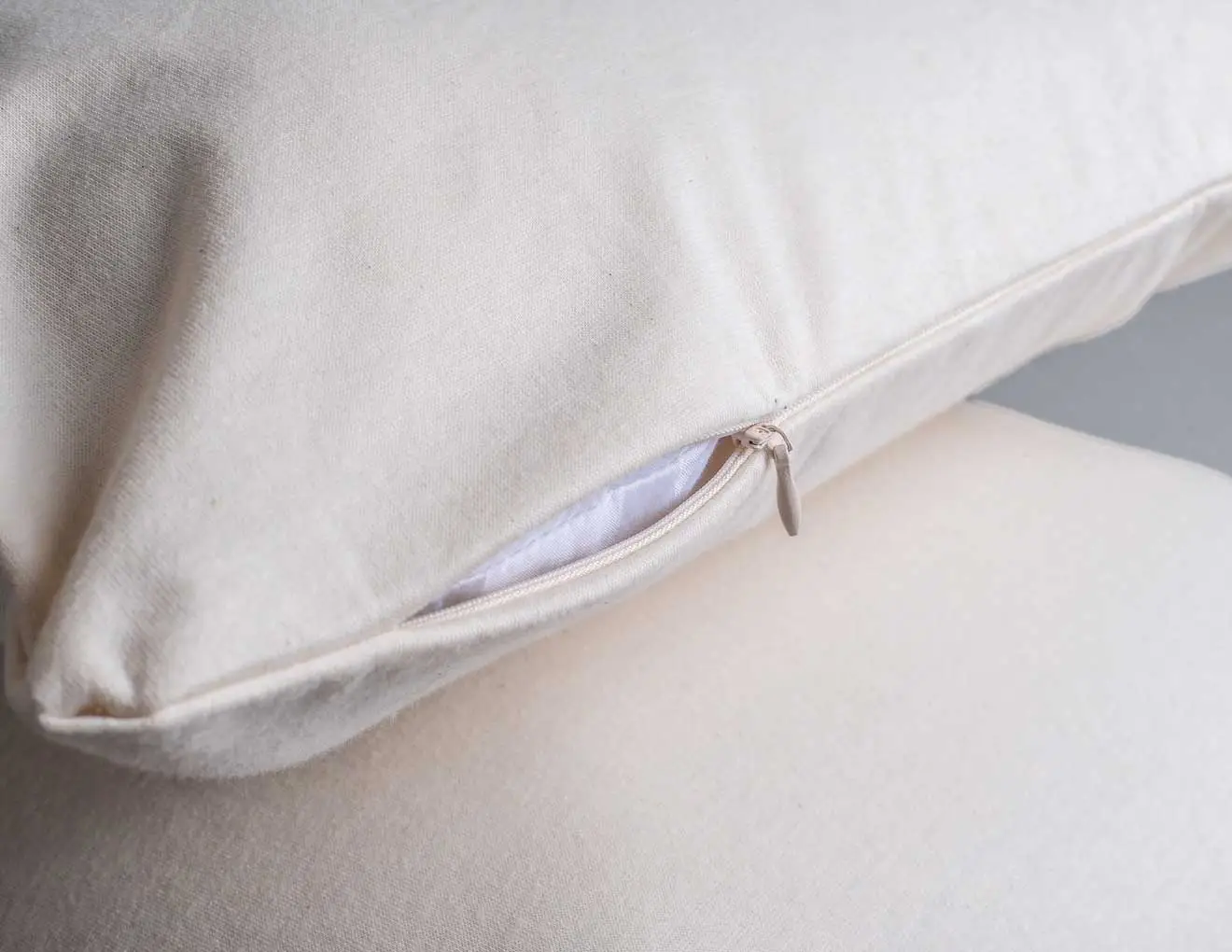
Traditional pillowcases might have a loose excess of material on both sides after putting them on your pillows, which might give your bed a bit of a haphazard look; however, pillowcases with zippered closures include a zipper on each side, which can give your pillow a more finished look.
Flanged Pillowcase
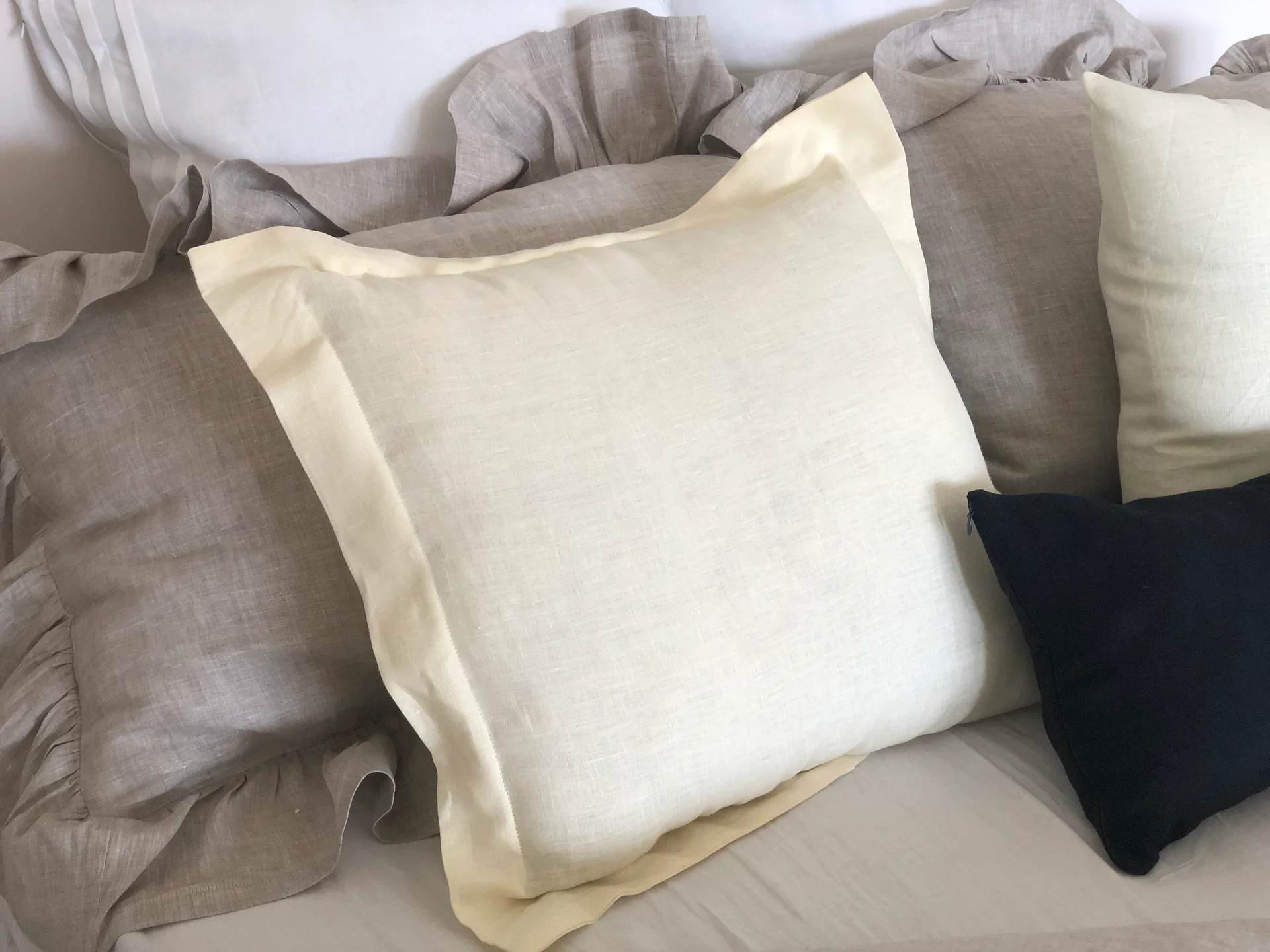
Flanged is a decorative border that can be sewn on the 4 corners of the pillowcases and shams, and it gives the pillowcase or the sham a modern aesthetic.
European Pillowcase (Sham)
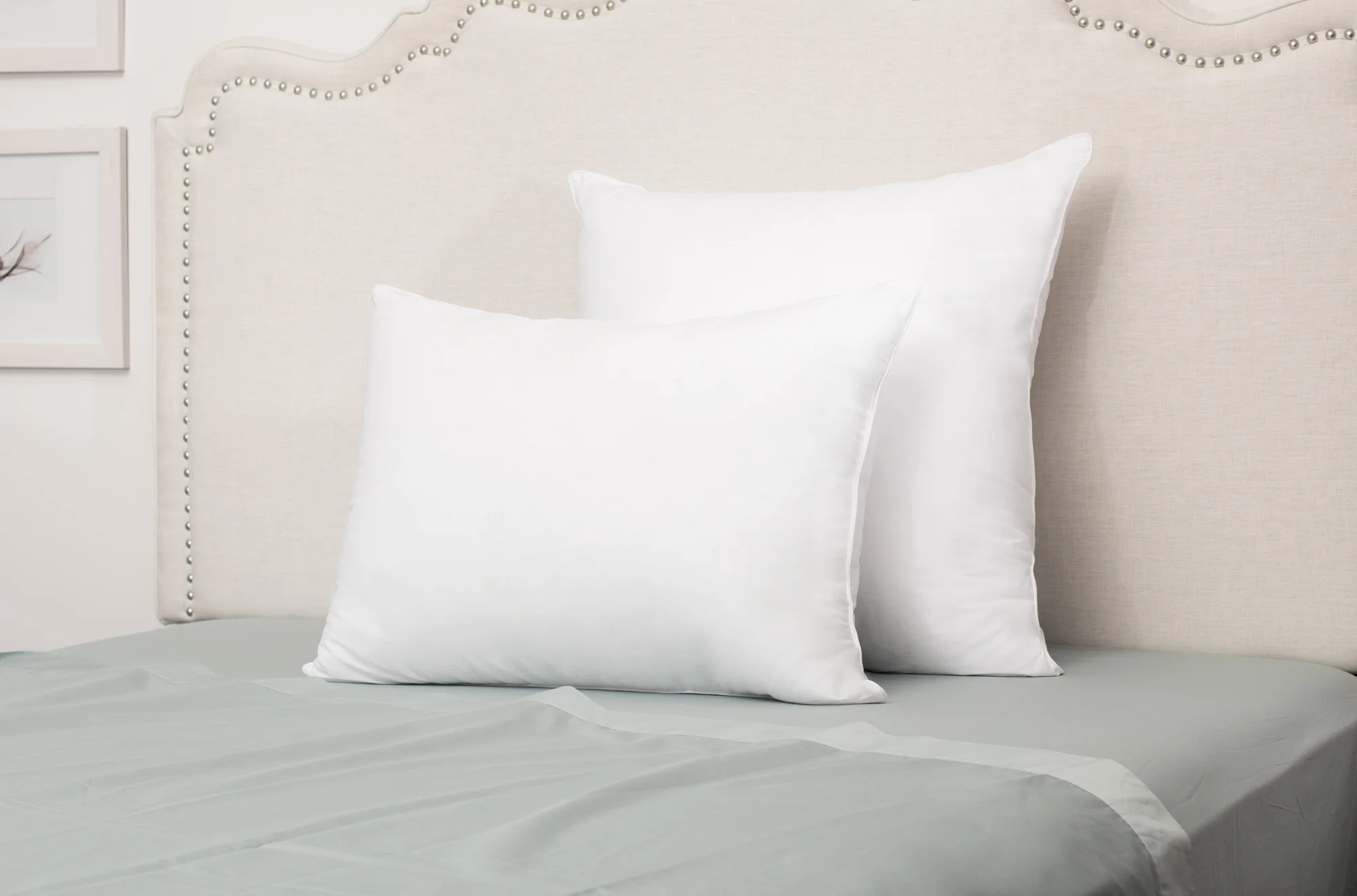
European pillowcases are designed specifically for European pillows, also known as euro pillows, and if you're wondering what shams are, they are small-sized decorative pillows that can be placed behind your standard, queen, and kind-size pillows.
Pillowcase Finishes
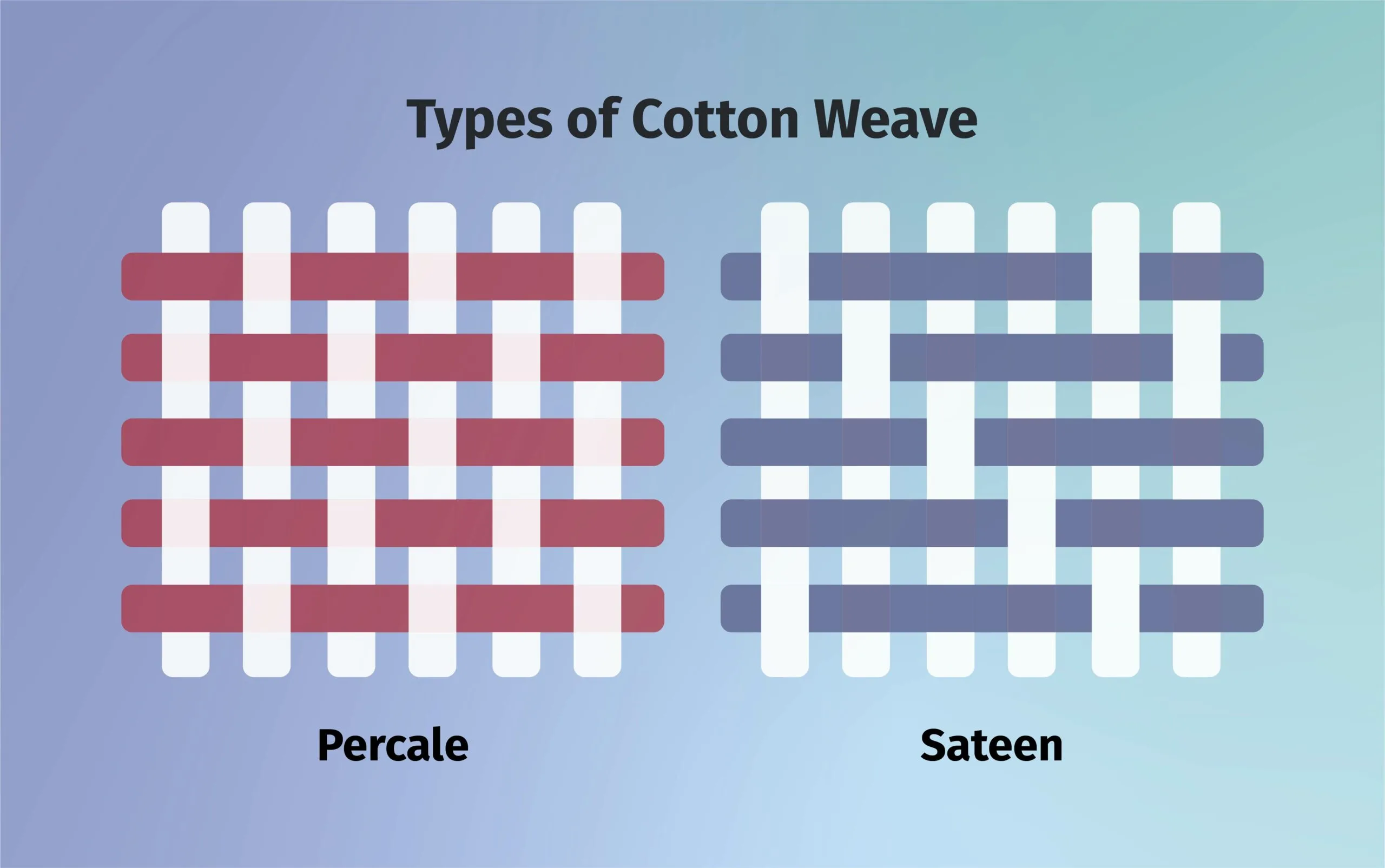
Percale Weave
Percale weave pillowcases have this distinct crispiness that is sought after by a lot of people, as it provides a more cozy feeling and helps you stay warm during cold nights, it’s made from cotton and it's a very light and durable material.
Sateen Weave
Sateen is a smooth and soft-to-the-touch fabric, and it‘s made of cotton and satin weave to provide extra comfort and durability. It’s a great option for people who tend to toss and turn a lot in their sleep, as it doesn’t wrinkle and it absorbs moisture.
Brushed Finish
Pillowcases with a brushe finish are a favorite among those who are looking for luxury and comfort. As they're combed on both sides, they’re a great option for hot sleepers as they regulate the heat and prevent overheating and sweating during the night.
What To Consider Before Buying A Pillowcase
Pillow Size
There are 4 standard pillow sizes: standard, queen, king, and body. Each one has different dimensions, and there are other less common sizes and shapes. One of the most important elements to consider before picking the right pillow case is that it fits your pillow size; otherwise, it will be too loose and might slip off, or you won’t be able to put it on the pillow because it’s too tight.
Pillowcase Material
As discussed, there are a myriad of pillowcase materials to choose from, so pick the material that fits your skin and hair type and also consider the breathability, durability, and overall comfort of the pillowcase.
Thread Count
Thread count is often overlooked, even though it’s a significant factor that influences the softness of the pillowcase.
If you’re looking for a soft pillowcase,,then look for a pillowcase with a thread count between 200 and 400, as any pillowcase with a lower thread count will have a rougher texture.
Features and Design
While pillows might look bland, a pillowcase can give it the edge it needs to compliment the aesthetics of your room, as there’s a variety of designs and colors to choose from, as well as multiple features such as zippers, buttons, and closures, which is a factor that you need to consider when selecting the right pillowcase.
Allergy
Make sure that you’re not allergic to the pillowcase material you’re buying, as some materials might trigger an allergic reaction in some people. If you’re prone to allergies, you can opt for a hypoallergenic material.
Maintenance
Not all pillowcases are equal when it comes to maintenance. A polyester pillowcase is much easier to clean, dry, and iron than a silk pillowcase, so before you pick the right pillowcase for you, make sure that you have the time and the means to maintain that pillowcase.
Budget
There is a wide range of prices when it comes to pillowcases, and the price of the pillowcases is mainly dictated by their material and cover, so if you’re on a tight budget try to look for the best mattress for you on the affordable options, but if you’re looking for luxury you need to understand that it will come with a higher price tag.
Personal Preference
Once you choose the best pillowcase in terms of material, size, and budget, you need to think about the overall look of the pillowcase in terms of colors, patterns, and other decorative elements, so the style of your bed blends with the rest of your room.
FAQs
Are standard pillowcases compatible with queen-size pillows?
Yes, the size of the standard pillowcase is 20 inches by 26 inches, which means that it could fit queen-size pillows; it also fits standard-size pillows; and it’s recommended to be paired with twin and twin XL mattresses.
How frequently is it recommended to wash pillowcases?
It depends on how much standard-size you sleep on it, but if you sleep on your bed every single day, then the recommended period is to wash your pillowcases every two weeks to prevent the accumulation of bacteria and other irritants.
Is a pillowcase necessary for a pillow?
You can technically sleep on a pillow without pillowcases, but that doesn’t mean that you should, as pillowcases provide a myriad of advantages that will enhance the quality of your sleep, such as regulating the temperature, wicking moisture, and preventing any hair or skin infections.
What pillowcase materials offer the best comfort and breathability?
Many pillowcases offer comfort and exceptional cooling features; however, silk is known to have great cooling properties, in addition to being the softest and gentlest material on the skin.
What are some luxurious materials commonly used in high-end pillowcases?
Silk and bamboo should be your go-to if you’re looking for luxurious, high-end pillowcases, but keep in mind that they’re also not the cheapest option for pillowcases on the market, so if you’re on a tight budget, they might not be the best choice for you.
What size is a standard pillowcase? And is it the same as the standard sham size?
A standard pillowcase is typically 20 inches by 26 inches. This size is designed to fit a standard-sized pillow, which is usually around 20 inches by 26 inches as well. It is important to note that the dimensions may differ slightly between brands, so it is always a good idea to check the specific measurements before purchasing a pillowcase.
Standard pillowcases and standard sham sizes are not the same. While both are used to cover pillows, there are some key differences between the two. A standard pillow sham is usually larger than a standard pillowcase and is often used for decorative purposes. It is designed to be placed on top of a standard pillow, covering it completely and adding an extra layer of style to the bed or couch.
Conclusion
Finding the right pillowcase is crucial to achieving optimal comfort during your sleep, and there are many types of pillowcases that ensure that they will fit any sleeping style or preference.
Things like pillowcase material, pillow size, and budget can help you minimize the number of options and find the perfect pillowcase for you.
Silk is probably one of the best materials for pillowcases on the market for its exceptional cooling properties and ultra-soft texture; however, it doesn't come cheap, so if you’re on a budget, you might find materials like cotton and polyester more convenient.
Jessica H.
Jessica is a reviewer, writer, and sleep enthusiast at Sleepiverse. Jessica graduated with her master's degree in Nursing research and education. She is a registered nurse and currently works in the Intensive Care Unit. Since becoming a nurse, Jessica has worked the night shift, which means a disrupted sleep schedule. Knowing she needed to function at her best while caring for patients at night, she spent a lot of time researching how to sleep well with a difficult schedule.


